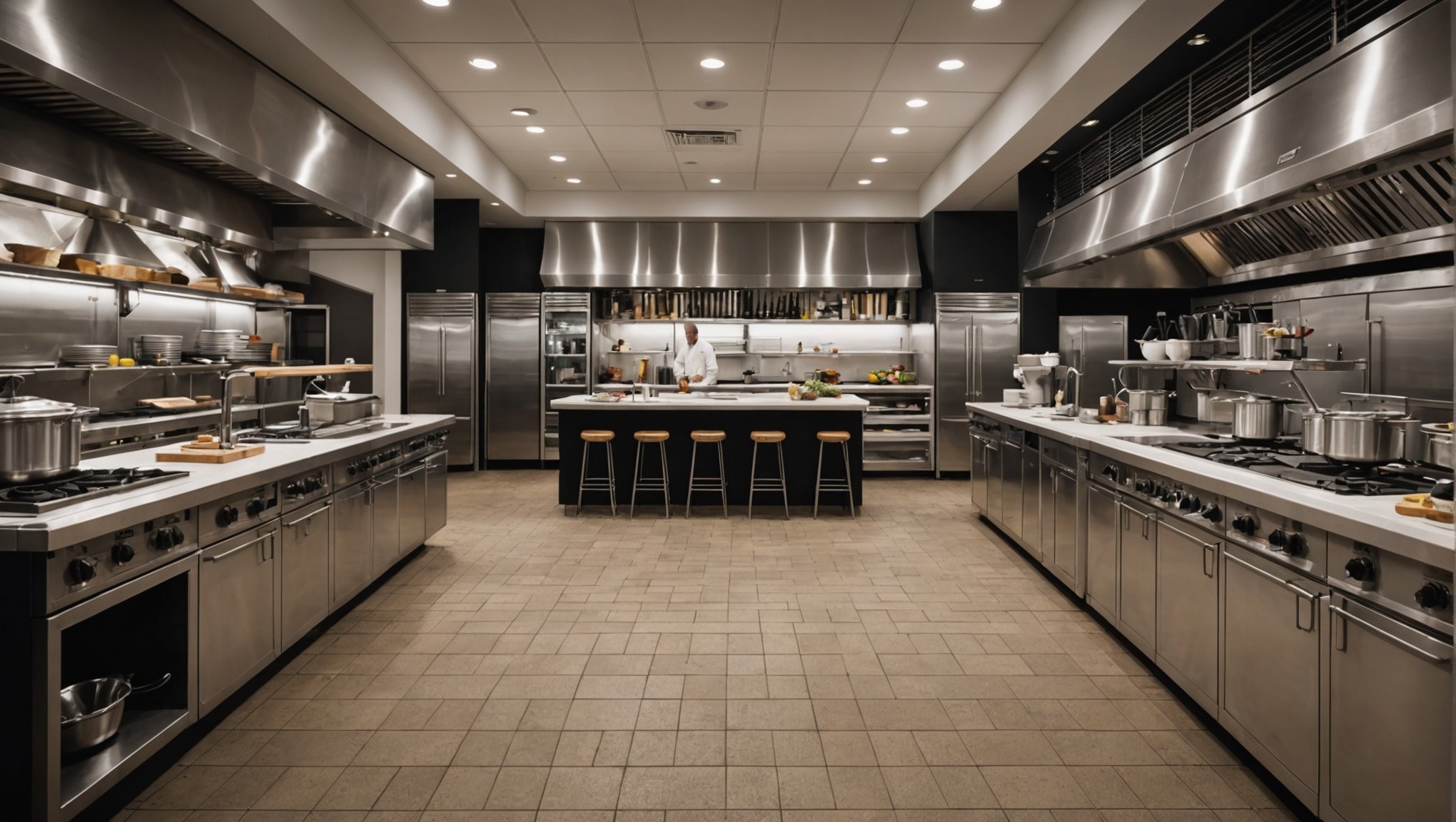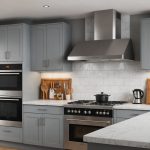Ultimate Noise-Reducing Flooring Options for Open Kitchen Restaurants: Your Complete Guide
When it comes to designing an open kitchen restaurant, one of the often-overlooked but crucial aspects is the flooring. The right flooring can significantly impact the overall ambiance and functionality of the space, particularly in terms of noise reduction. In this guide, we will delve into the best flooring options for minimizing noise in open kitchen restaurants, ensuring your space is both functional and comfortable for patrons and staff alike.
Understanding the Importance of Noise Reduction in Open Kitchens
Open kitchens are known for their vibrant and dynamic atmosphere, but they can also be quite noisy. The clanging of pots and pans, the hum of appliances, and the chatter of patrons all contribute to a cacophonous environment. This noise can be detrimental to the dining experience and even pose health risks for staff who are exposed to high noise levels for extended periods.
This might interest you : Sustainable soirés: how bars can maintain the party atmosphere while embracing eco-friendly practices
“Restaurants can be brutally loud, and it’s not just about the diners; the staff are at risk of long-term hearing loss,” notes an article from Vox, highlighting the critical need for effective noise reduction strategies in restaurant settings.
Soundproof Flooring Options
When it comes to reducing noise, the flooring you choose can be a game-changer. Here are some of the best soundproof flooring options for your open kitchen restaurant:
Also to read : Mastering the Art of Restaurant Renovation: Blending Classic Charm with Contemporary Style
Carpet and Padding
While carpet might not be the first choice for a kitchen due to its maintenance requirements, it is an excellent sound absorber. In areas where the kitchen transitions into a dining space, carpet can be highly effective.
- Excellent Sound Absorption: Carpet acts like a sponge for noise, significantly reducing echoes and ambient sound.
- Cozy Underfoot: It provides a comfortable surface, ideal for barefoot or lightly shod patrons.
- Endless Style Options: From sleek low-pile to luxurious shag, carpet offers a wide range of design choices.
- Easy to Install: Even for DIY enthusiasts, carpet installation is relatively straightforward.
Cork Flooring
Cork is a sustainable and eco-friendly option that offers natural sound-dampening properties.
- Natural Sound-Dampening: Cork absorbs sound waves effectively, creating a quieter environment.
- Sustainable and Renewable: Harvested from the bark of cork oak trees without harming them, cork is an environmentally friendly choice.
- Warm and Comfortable: It provides a warm and comfortable surface underfoot.
- Unique Appearance: Cork flooring has a distinctive, textured look that adds character to your space.
Vinyl Flooring
Vinyl flooring, particularly sheet vinyl, is highly resilient and effective for noise reduction.
- Moisture-Resistant: Vinyl is 100% moisture-resistant, making it ideal for kitchen environments.
- Durable: It is laboratory-engineered to last a long time and can withstand heavy foot traffic.
- Seam Reduction: In small rooms, sheet vinyl can be installed with minimal or no seams, reducing the risk of flooring deterioration.
Acoustic Underlay and Soundproofing Materials
In addition to the flooring itself, using the right underlay and soundproofing materials can significantly enhance noise reduction.
Acoustic Underlay
Acoustic underlay is a specialized material placed beneath the flooring to reduce sound transmission.
- Reduces Sound Transmission: It minimizes noise from footsteps and other activities, creating a quieter space.
- Eco-Friendly Options: Materials like cork underlay offer natural sound absorption and are environmentally friendly.
Soundproof Doors and Windows
While not directly related to flooring, soundproof doors and windows can further reduce overall noise levels in an open kitchen restaurant.
- Blocks Noise: Soundproof doors and windows prevent noise from entering or leaving the room, ensuring a quieter environment.
- Additional Benefits: These can also provide better insulation and energy efficiency.
Optimizing Layout and Design for Better Acoustics
The layout and design of your open kitchen restaurant can also play a significant role in noise reduction.
Strategic Zoning
Dividing the space into different functional areas can help contain noise.
- Functional Areas: Zoning the kitchen and dining areas can help absorb sound and reduce noise levels.
- Furniture and Decor: Using furniture and decor to define different zones can further enhance acoustics.
Kitchen Islands and Breakfast Bars
These elements can serve as natural sound barriers and add functional surfaces.
- Sound Barriers: Kitchen islands and breakfast bars can contain noise within the kitchen area.
- Additional Surfaces: They provide surfaces for soft furnishings like upholstered stools, further enhancing acoustics.
Practical Tips and Examples
Here are some practical tips and examples to help you implement these strategies effectively:
Using Rugs and Carpets Strategically
In areas where hard flooring is predominant, adding rugs and carpets can make a significant difference.
- Sound Absorption: Rugs and carpets are excellent sound absorbers, particularly in areas with hard flooring.
- Example: Placing a large rug in the dining area can significantly reduce noise levels and minimize echoes.
Incorporating Soft Furnishings and Decor
Soft furnishings and decor can help absorb sound and reduce noise levels.
- Curtains and Blinds: Heavy, dense fabrics are effective at absorbing sound. Opt for floor-to-ceiling curtains to maximize their sound-absorbing potential.
- Example: In a high-ceilinged room with glass walls, closing drapes and using table cloths to cover large screens can significantly dampen the noise.
Detailed Comparison of Flooring Options
Here is a detailed comparison of some of the best flooring options for noise reduction:
| Flooring Type | Sound Absorption | Durability | Maintenance | Cost |
|---|---|---|---|---|
| Carpet | High | Medium | High | Moderate |
| Cork | High | High | Low | Moderate |
| Vinyl | Medium | High | Low | Affordable |
| Laminate | Low | Medium | Medium | Affordable |
| Solid Hardwood | Low | High | Medium | High |
| Engineered Wood | Low | Medium | Medium | High |
Actionable Advice for Restaurant Owners
Here are some actionable tips for restaurant owners looking to enhance the acoustics of their open kitchen restaurants:
- Assess Your Space: Evaluate the current noise levels in your restaurant and identify areas where noise reduction is most needed.
- Choose the Right Flooring: Select flooring that balances durability, maintenance, and sound absorption based on your specific needs.
- Use Acoustic Underlay: Install acoustic underlay beneath your flooring to further reduce sound transmission.
- Optimize Layout: Strategically zone your space and use furniture and decor to define different areas and absorb sound.
- Incorporate Soft Furnishings: Use rugs, carpets, curtains, and blinds to absorb sound and create a more comfortable environment.
Enhancing the acoustics of an open kitchen restaurant is a multifaceted task that involves choosing the right flooring, using soundproofing materials, and optimizing the layout and design of the space. By implementing these strategies, you can create a more harmonious and enjoyable environment for both patrons and staff.
“By finding a balance that suits your needs and enhances the overall comfort of your home—or in this case, your restaurant—you’ll transform your open kitchen into a space that is both functional and acoustically pleasing,” advises a guide on enhancing kitchen acoustics.
Whether you opt for carpet, cork, vinyl, or other sound-absorbing materials, the key is to create a space that is not only visually appealing but also comfortable and quiet. By doing so, you ensure a positive dining experience that will keep your patrons coming back.







No responses yet